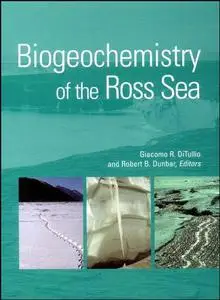Biogeochemistry of the Ross Sea By Giacomo R. DiTullio, Robert B. Dunbar
2003 | 358 Pages | ISBN: 0875909728 | PDF | 56 MB
2003 | 358 Pages | ISBN: 0875909728 | PDF | 56 MB
Published by the American Geophysical Union as part of the Antarctic Research Series, Volume 78. The seas surrounding Antarctica are the least-studied on Earth, yet they figure prominently in both the global climate system and the biogeochemical cycling of such key elements as C, N, Si, and P. The Southern Ocean affects climate directly through the sinking of surface waters via cooling and changes in salt content. Such water near Antarctica moves slowly northward through all major ocean basins. In doing so, it retains a long-lived signature of the physical and biological processes that occurred in Antarctic surface waters lasting many hundreds of years through all phases: sinking, northward flow, and mixing or upwelling into the sunlit ocean thousands of kilometers away. By this process, CO2 that dissolves into the Antarctic seas may be stored in the deep ocean for centuries. In fact, the Southern Ocean is one of the most important regions on Earth for the uptake and subsurface transport of fossil fuel CO2.



